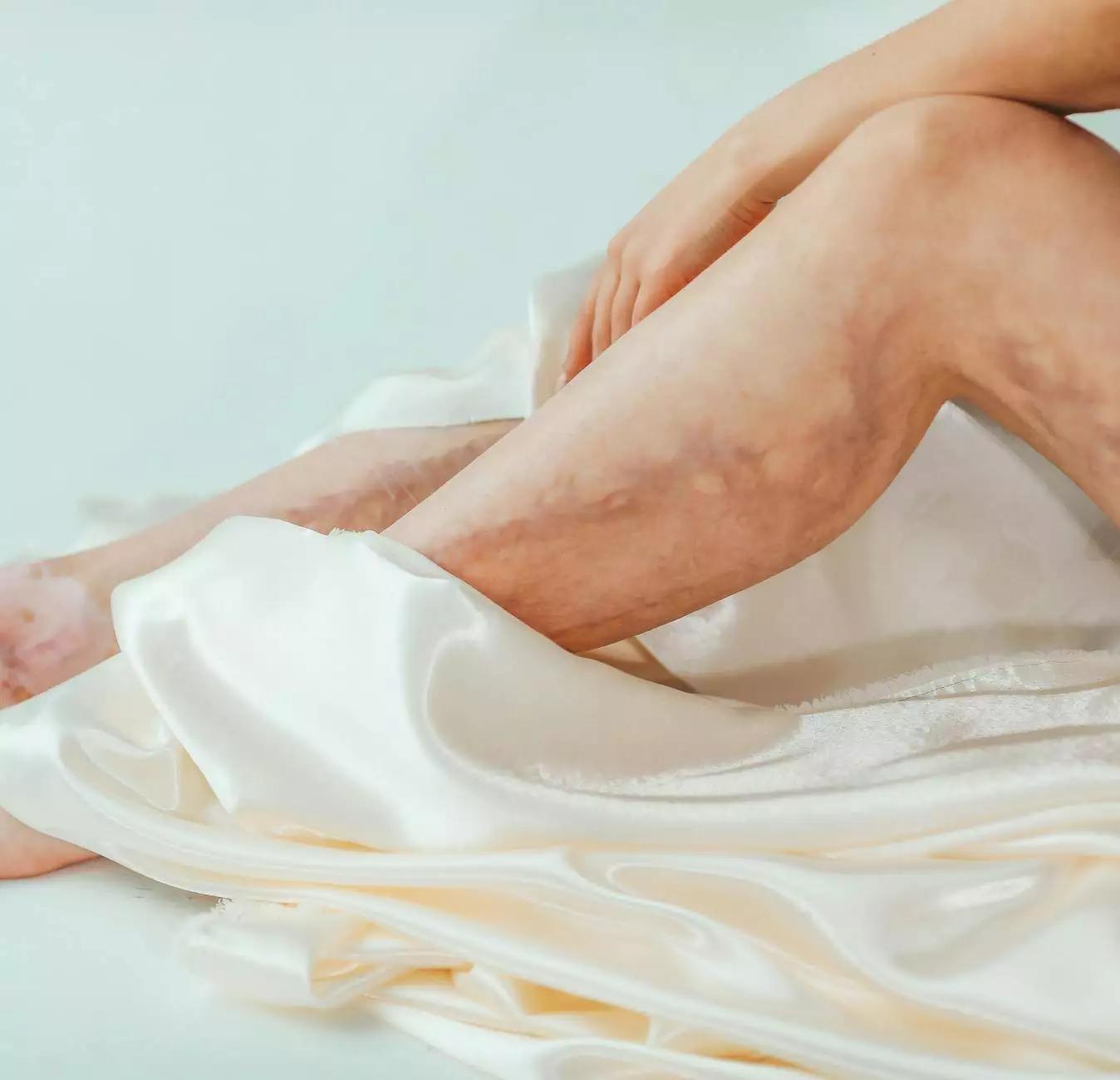Understanding and Managing Spots on Feet and Legs: A Comprehensive Guide to Vascular Health

Many individuals notice unusual spots on their feet and legs and find themselves concerned about their appearance or underlying health issues. These spots may vary in size, color, texture, and location, often indicating different health conditions, including vascular problems, skin disorders, or other systemic issues. Gaining a thorough understanding of the causes, diagnostic methods, and treatment options is essential for effective management and overall vascular health maintenance.
Introduction to Spots on Feet and Legs and Their Significance
The human body's skin, particularly on the lower extremities, is susceptible to a variety of conditions that manifest as spots, blemishes, or discolorations. While some spots on feet and legs are benign and purely cosmetic, others may signal serious underlying vascular or systemic health issues that require professional medical attention. Recognizing the pattern, appearance, and associated symptoms helps in early diagnosis and effective treatment.
Common Types of Spots on Feet and Legs
Understanding the types of spots on feet and legs is crucial for proper diagnosis. Some of the most prevalent variations include:
- Venous Stasis Dermatitis: Red or brown discolorations resulting from poor venous return.
- Pigmentation Spots: Flat, hyperpigmented patches caused by sun damage or aging.
- Spider Veins and Varicose Veins: Small, red, or purple visible veins often associated with underlying venous insufficiency.
- Petechiae and Purpura: Small purple or red spots caused by bleeding under the skin.
- Skin Lesions from Vascular Malformations: Abnormal blood vessel formations manifesting as irregular spots or patches.
- Fungal or Dermatological Infections: Spots with accompanying itching, scaling, or discomfort.
The Causes of Spots on Feet and Legs
Vascular Conditions and Circulatory Disorders
The vascular system plays a pivotal role in skin health. Compromised circulation, varicose veins, or venous insufficiency can lead to the development of various spots and discolorations. When blood flow is impaired, blood tends to pool in the lower extremities, causing visible changes like brownish pigmentation or swelling, often accompanied by skin breakdown or ulceration.
Skin and Systemic Diseases
Autoimmune disorders such as lupus or vasculitis can cause spots resulting from inflammation of blood vessels. Similarly, infections, allergic reactions, or chronic skin conditions like eczema may present as unique skin spots on the feet and legs.
Environmental and Lifestyle Factors
Prolonged sun exposure can increase pigmentation, leading to age spots or solar lentigines. Additionally, lifestyle factors like smoking, obesity, and inactivity contribute to vascular health deterioration, fostering the development of suspicious spots and fashioning a risk for more severe complications.
Diagnosing Spots on Feet and Legs: A Multi-Faceted Approach
Accurate diagnosis is essential for determining the appropriate treatment plan. The diagnostic process typically involves:
Visual Examination
Detailed inspection of the skin spots often provides initial clues about their origin. Color, size, shape, and distribution are considered vital indicators.
Medical History Assessment
Understanding patient history, including family history, lifestyle habits, previous illnesses, or recent injuries, informs the diagnostic process.
Non-Invasive Imaging and Tests
- Duplex Ultrasound: Evaluates blood flow in veins and arteries, revealing insufficiencies or blockages.
- Photographs and Dermoscopy: High-resolution imaging helps analyze skin lesions intricately.
- Blood Tests: Identify systemic conditions like clotting disorders or inflammatory markers.
Biopsies and Histopathology
In specific cases, skin biopsies may be performed to analyze tissue samples, assisting in diagnosing complex conditions such as vasculitis or skin cancers.
Effective Treatment Options for Spots on Feet and Legs
Addressing spots on feet and legs involves a tailored approach based on the underlying cause. Below are prevalent treatment strategies:
Vascular Treatments
- Compression Therapy: Using compression stockings to improve blood flow and reduce venous pressure, which can diminish pigmentation and prevent further spots.
- Endovenous Procedures: Minimally invasive techniques like laser or radiofrequency ablation target damaged veins, alleviating symptoms and improving skin appearance.
- Sclerotherapy: Injecting sclerosant agents into problematic veins to close them and redirect blood flow.
Medical and Pharmacological Interventions
- Topical Medications: Corticosteroids or skin-lightening agents for inflammatory or pigmented spots.
- Oral Medications: Blood thinners or anti-inflammatory drugs depending on specific diagnoses.
Skin Care and Lifestyle Modifications
- Sun Protection: Applying broad-spectrum sunscreens prevents pigmentation worsening.
- Healthy Lifestyle: Regular exercise, maintaining a normal weight, and quitting smoking are crucial for vascular health.
- Skin Hygiene: Keeping the skin clean reduces infection risk and improves overall appearance.
Surgical and Cosmetic Options
In cases involving stubborn spots or cosmetic concerns, options such as laser therapy, microdermabrasion, or skin excision might be considered by specialists.
Prevention Tips for Maintaining Healthy Skin and Vascular Function
- Consistent Use of Sun Protection: Shields skin from UV damage, reducing pigmentation risk.
- Regular Medical Checkups: Early detection of vascular issues can prevent progression and complications.
- Stay Active: Walking, swimming, and exercise promote healthy circulation.
- Avoid Prolonged Sitting or Standing: Change positions frequently to reduce venous pooling.
- Healthy Diet: Incorporate antioxidant-rich foods and stay well-hydrated to support skin and vascular health.
Why Choose Experts at trufflesveinspecialists.com
Our specialized team of Doctors, Vascular Medicine experts, and Skin Care professionals is dedicated to providing comprehensive diagnosis and personalized treatment plans tailored to each patient’s unique condition. We utilize state-of-the-art technology and evidence-based approaches to ensure optimal results, helping you restore both health and confidence.
Final Thoughts: Taking Action Against Spots on Feet and Legs
Understanding the complexities behind spots on feet and legs empowers you to seek timely medical advice and intervention. Whether they're a cosmetic concern or a sign of underlying vascular disease, early diagnosis and modern treatment options significantly improve outcomes. Ensuring your feet and legs remain healthy is integral to your overall well-being and mobility. Prioritize regular checkups and adopt healthy lifestyle habits to maintain vibrant, healthy skin and optimal vascular function.
Contact Us for Expert Vascular Care
If you notice any unusual spots on your feet and legs or experience related symptoms like swelling, pain, or skin changes, don't hesitate to consult our specialists. Visit trufflesveinspecialists.com today for comprehensive vascular assessments and personalized treatment options.









